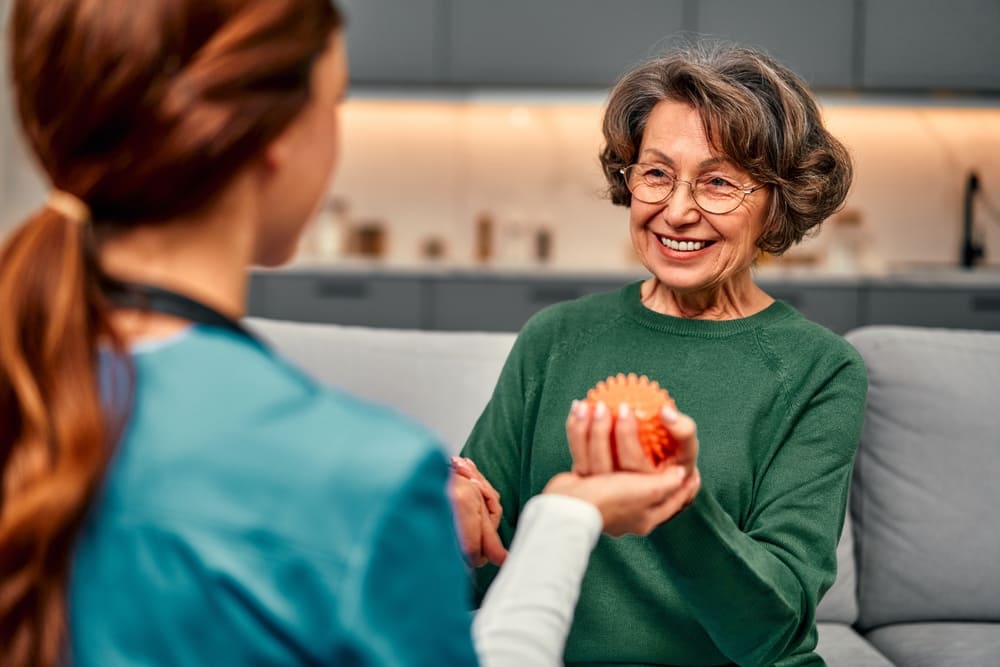
A stroke can disrupt your entire world in a matter of minutes. It can affect your ability to walk, speak, dress yourself, or even hold a loved one’s hand. The emotional weight of losing control over basic tasks can feel overwhelming. But the truth is, stroke survivors are not powerless. With proper care and time, many regain their abilities and rebuild their confidence. That’s where stroke rehabilitation plays a crucial role.
Starting recovery as early as possible is key. The brain is most adaptable right after a stroke. That’s when it’s primed to relearn and reroute, giving you the best chance at getting back what was lost. Whether it’s mobility, speech, or independence, timely intervention can make a lasting difference.
The path forward isn’t always easy. But with the right team by your side and a plan that meets your unique needs, hope becomes progress. That’s the power of therapy rooted in care, science, and community.
How Physical Therapy Fuels Stroke Recovery
Every stroke is different, and so is every recovery. Physical therapy for stroke patients is designed to help your brain and body reconnect through focused movement. The goals may seem simple: stand without support, grip a cup, walk to the bathroom. But each milestone is a hard-earned victory.
In a structured stroke recovery program, therapists use repetitive, guided exercises to rebuild strength and retrain the nervous system. This process, called neuroplasticity, allows healthy areas of the brain to compensate for damaged ones. Over time, the brain creates new neural pathways, helping patients regain lost functions. This isn’t a theory. It’s seen daily in patients who go from needing help to getting dressed on their own to walking unassisted again.
Physical therapy for stroke rehabilitation focuses on restoring movement, but its reach goes deeper. Recovery often begins with passive range-of-motion exercises and eventually progresses to complex, task-specific movements that mimic everyday life. Consistency is essential, and every session is an opportunity to push past what seemed impossible the week before.
Here’s what effective physical therapy can include:
- Strength-building exercises for weakened limbs
- Gait training to improve balance and reduce falls
- Coordination drills to restore control over fine movements
- Transfers and mobility tasks to promote independence
- Postural training to improve alignment and comfort
Beyond the clinical techniques, there’s a human element. Therapists also serve as coaches, cheerleaders, and advocates. They track your progress, adjust your plan when needed, and celebrate your wins, no matter how small they may seem. Their encouragement is often the extra push that helps patients take their first independent step or their first deep breath without fear.
The success of these exercises isn’t just about motion. It’s about restoring confidence, purpose, and freedom. Each achievement builds momentum, and over time, the person who once felt powerless begins to believe in their own strength again.
Personalized Care in Queens Tailored for You
Queens is one of the most culturally rich boroughs in the world. That means post-stroke rehabilitation must reflect that diversity in language, belief, and care preferences. Every stroke survivor has a story. And therapy should honor that story with a personalized plan.
In neighborhoods like Ozone Park, Elmhurst, and Queens Village, multilingual care is needed. Whether you speak Spanish, Bengali, Chinese, or Urdu, you deserve clear communication and culturally aware treatment.
The best stroke rehabilitation programs offer far more than exercises. They offer flexibility. Some patients feel more comfortable starting rehab at home. Others prefer a clinic setting. In both cases, consistency is critical. When providers meet patients where they are, the outcome improves.
Your Stroke Rehabilitation Roadmap
Starting physical therapy in Queens NY after a stroke often involves three main stages: acute, subacute, and outpatient. Here’s what each step might look like:
- Acute Phase (Hospital-based care): Therapists begin gentle exercises to prevent complications like joint stiffness or bedsores.
- Subacute Phase (Rehab facility or in-home): Patients start more active sessions; working on mobility, coordination, and balance.
- Outpatient Phase (Clinic-based care): Focus shifts to fine-tuning movements, returning to work, and improving quality of life.
Key therapies that may support stroke rehabilitation include:
- Physical therapy: Regains strength and range of motion
- Occupational therapy: Helps with everyday tasks like bathing and dressing
- Speech therapy: Restores communication and swallowing skills
Advancements in technology also make recovery more effective. Some patients benefit from robotic-assisted therapy or virtual reality simulations. Others use mobility aids or apps to track progress and stay motivated.
Why Choose JPM Physical Therapy, P.C. for Stroke Rehabilitation?
Recovery needs to be flexible to each patient. At JPM Physical Therapy, P.C., the focus is on real outcomes for real people. With locations in Ozone Park, Queens Village, and two clinics in Elmhurst, compassionate care is never far from home.
What sets JPM apart?
- Local expertise: Deep roots in the community and an understanding of each neighborhood’s unique needs
- Multilingual staff: Friendly, culturally sensitive therapists who speak your language
- Insurance-friendly: Accepting Medicare, Workers Comp, No Fault, and major private plans
- Fast access: Same or next-day appointments to get you started sooner
- Supportive environment: Welcoming to families, seniors, and accident survivors alike
Whether you’re recovering from a sudden event or managing the long-term effects of a stroke, JPM meets you where you are.
Book Your Consultation Today
Stroke rehabilitation takes courage. But you don’t have to do it alone. At JPM Physical Therapy, P.C., each step of your journey is met with expert care and honest encouragement. From walking again to regaining fine motor skills, our team is here to guide your recovery in the way that works best for you.
Bring your insurance card, a list of medications, and your goals. We’ll bring the plan, the experience, and the support.
Don’t let a stroke define your future. Let’s rebuild your strength, restore your independence, and rediscover your confidence together.
